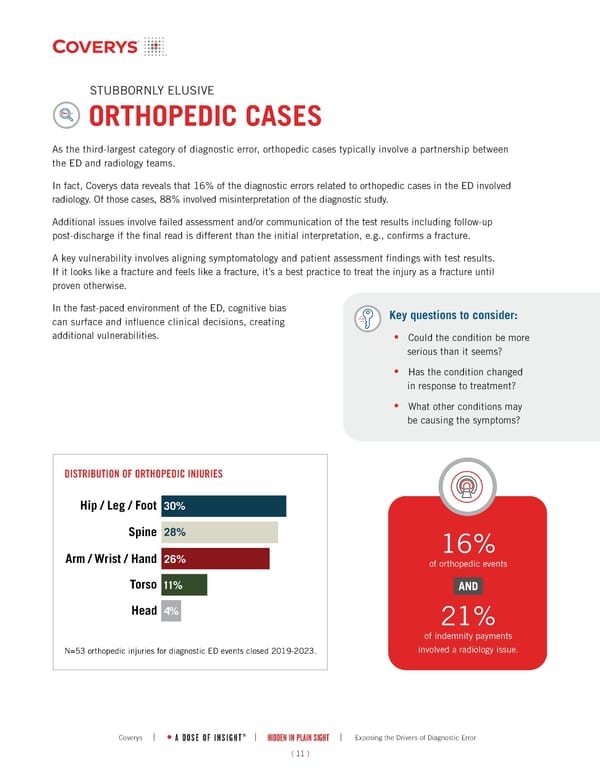DISTRIBUTION OF ORTHOPEDIC INJURIES Head Torso Arm / Wrist / Hand Spine Hip / Leg / Foot 11% 4% 26% 28% 30% N=53 orthopedic injuries for diagnostic ED events closed 2019-2023. STUBBORNLY ELUSIVE ORTHOPEDIC CASES As the third-largest category of diagnostic error, orthopedic cases typically involve a partnership between the ED and radiology teams. In fact, Coverys data reveals that 16% of the diagnostic errors related to orthopedic cases in the ED involved radiology. Of those cases, 88% involved misinterpretation of the diagnostic study. Additional issues involve failed assessment and/or communication of the test results including follow-up post-discharge if the final read is different than the initial interpretation, e.g., confirms a fracture. A key vulnerability involves aligning symptomatology and patient assessment findings with test results. If it looks like a fracture and feels like a fracture, it’s a best practice to treat the injury as a fracture until proven otherwise. In the fast-paced environment of the ED, cognitive bias can surface and influence clinical decisions, creating additional vulnerabilities. Key questions to consider: • Could the condition be more serious than it seems? • Has the condition changed in response to treatment? • What other conditions may be causing the symptoms? ( 11 ) 16% of orthopedic events AND 21% of indemnity payments involved a radiology issue. | HIDDEN IN PLAIN SIGHT | Exposing the Drivers of Diagnostic Error A DOSE OF INSIGHT ® Coverys |
 Hidden in Plain Sight: Exposing the Drivers of Diagnostic Error Page 11 Page 13
Hidden in Plain Sight: Exposing the Drivers of Diagnostic Error Page 11 Page 13